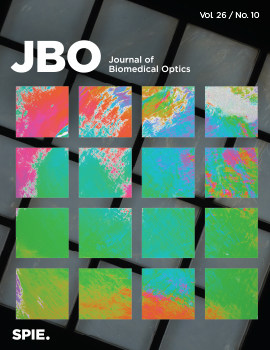Rainer Leitgeb, Fabian Placzek, Elisabet Rank, Lisa Krainz, Richard Haindl, Qian Li, Mengyang Liu, Mengyang Liu, Angelika Unterhuber, Tilman Schmoll, Wolfgang Drexler
Journal of Biomedical Optics, Vol. 26, Issue 10, 100601, (October 2021) https://doi.org/10.1117/1.JBO.26.10.100601

TOPICS: Optical coherence tomography, Imaging systems, Tissue optics, Tissues, Medical diagnostics, In vivo imaging, Image resolution, Retina, Adaptive optics, Endoscopy
Significance: After three decades, more than 75,000 publications, tens of companies being involved in its commercialization, and a global market perspective of about USD 1.5 billion in 2023, optical coherence tomography (OCT) has become one of the fastest successfully translated imaging techniques with substantial clinical and economic impacts and acceptance.
Aim: Our perspective focuses on disruptive forward-looking innovations and key technologies to further boost OCT performance and therefore enable significantly enhanced medical diagnosis.
Approach: A comprehensive review of state-of-the-art accomplishments in OCT has been performed.
Results: The most disruptive future OCT innovations include imaging resolution and speed (single-beam raster scanning versus parallelization) improvement, new implementations for dual modality or even multimodality systems, and using endogenous or exogenous contrast in these hybrid OCT systems targeting molecular and metabolic imaging. Aside from OCT angiography, no other functional or contrast enhancing OCT extension has accomplished comparable clinical and commercial impacts. Some more recently developed extensions, e.g., optical coherence elastography, dynamic contrast OCT, optoretinography, and artificial intelligence enhanced OCT are also considered with high potential for the future. In addition, OCT miniaturization for portable, compact, handheld, and/or cost-effective capsule-based OCT applications, home-OCT, and self-OCT systems based on micro-optic assemblies or photonic integrated circuits will revolutionize new applications and availability in the near future. Finally, clinical translation of OCT including medical device regulatory challenges will continue to be absolutely essential.
Conclusions: With its exquisite non-invasive, micrometer resolution depth sectioning capability, OCT has especially revolutionized ophthalmic diagnosis and hence is the fastest adopted imaging technology in the history of ophthalmology. Nonetheless, OCT has not been completely exploited and has substantial growth potential—in academics as well as in industry. This applies not only to the ophthalmic application field, but also especially to the original motivation of OCT to enable optical biopsy, i.e., the in situ imaging of tissue microstructure with a resolution approaching that of histology but without the need for tissue excision.



 Receive Email Alerts
Receive Email Alerts